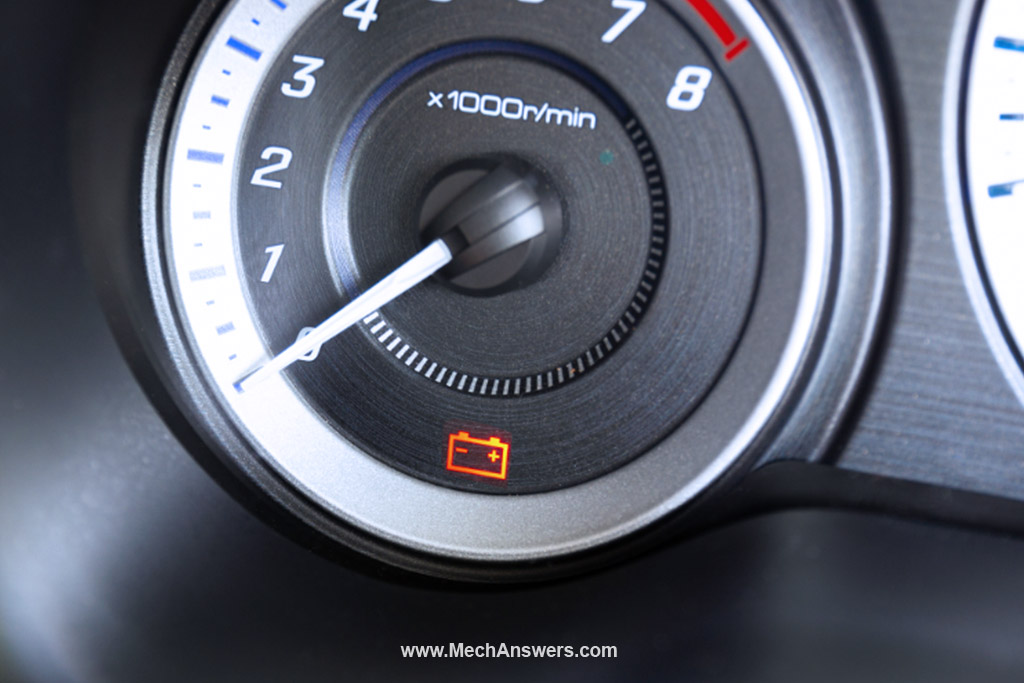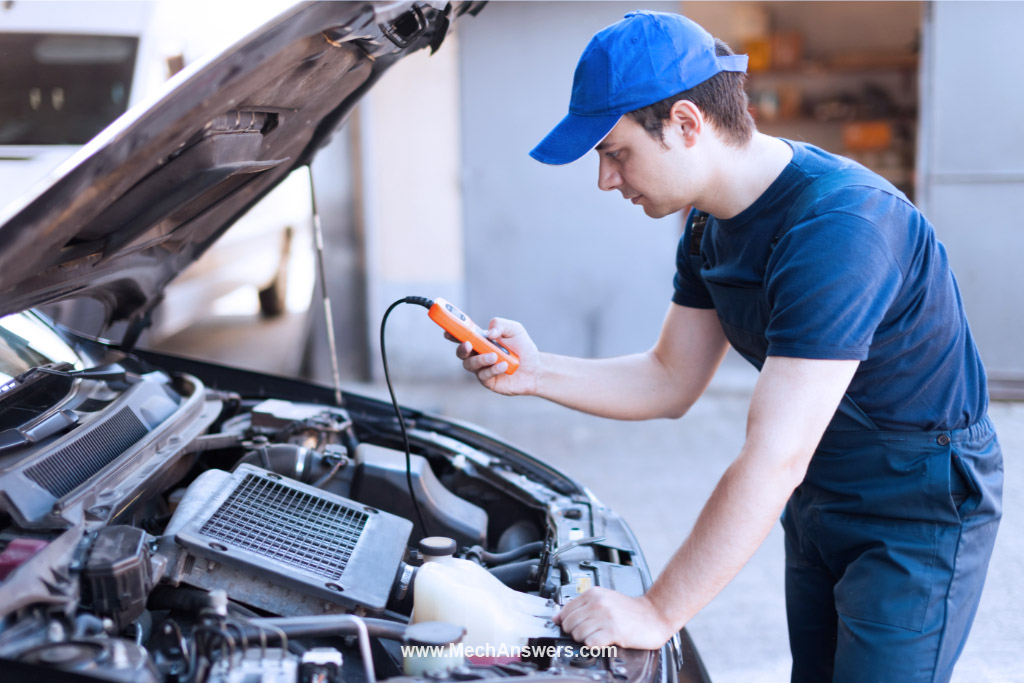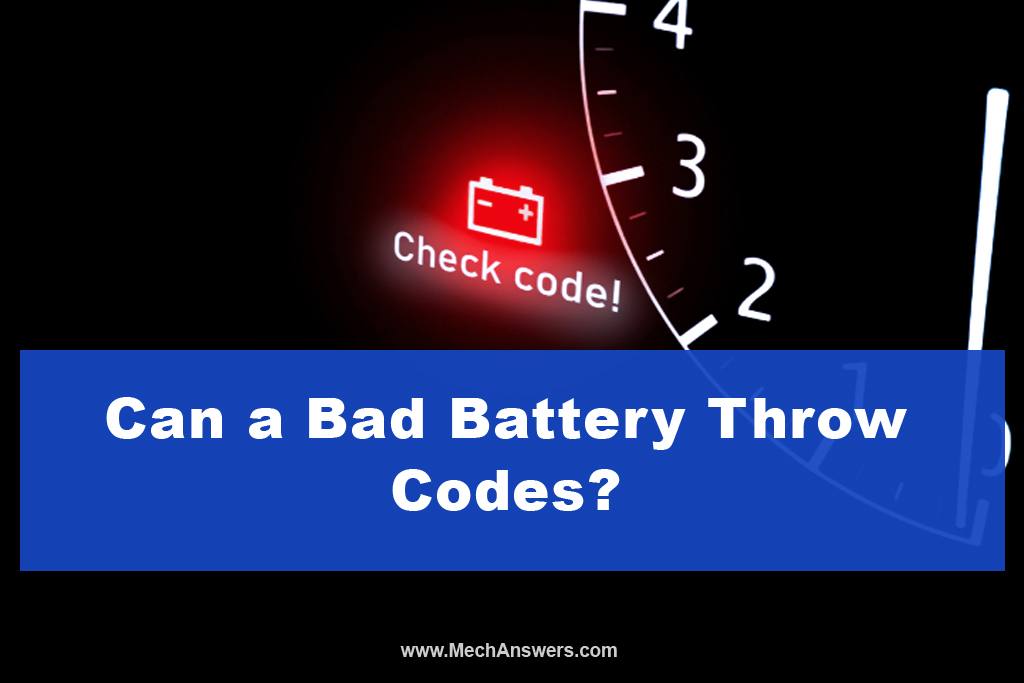Are you curious about your car’s electrical issues, wondering “Can a Bad Battery Throw Codes?” If so, you’ve come to the right place.
So, what does ‘Can a Bad Battery Throw Codes?’ imply? Yes, a faulty or dying battery can indeed cause your car to throw codes. When a battery’s voltage falls below normal levels, it can trigger various error codes as different systems in your vehicle fail to receive adequate power.
By reading this article, you’ll gain comprehensive knowledge on how a bad battery can cause your car to display error codes, the causes behind this, and how to fix it. Understanding this can save you from unnecessary panic when seeing these codes and enable you to take the right steps to address the issue.
Table of Contents
Can A Bad Battery Throw Codes?
Understanding Vehicle Error Codes
Automobiles are equipped with an Onboard Diagnostic system, or OBD, that constantly checks and maintains various subsystems within the vehicle.
When this system detects an error or failure, it illuminates the “Check Engine” light on the dashboard and stores the relevant error code. These codes provide a starting point for technicians to diagnose and fix issues.
How a Bad Battery Can Cause Error Codes
Car batteries supply power to various electrical systems, sensors, and computer modules in a vehicle. When the battery voltage drops below a certain level, these systems might not function properly, causing the OBD system to trigger error codes.
Some common systems that are affected include the fuel system, emissions system, ignition system, and various sensor circuits.
Common Error Codes Caused by a Bad Battery
A weak or faulty battery can trigger several error codes, many of which might seem unrelated to the battery at first glance. Codes such as P0300 (Random/Multiple Cylinder Misfire Detected), P0171 (System Too Lean), or P0128 (Coolant Thermostat) can all be caused by a bad battery.
While these codes can be indicative of other issues as well, if they occur together or if they persist after fixing the obvious issues, it might be time to check the battery.
Clearing Error Codes
After replacing a bad battery, it’s essential to clear any error codes that were triggered. Most codes will not clear automatically; they need to be manually reset using an OBD-II scanner.
After the codes are cleared, drive the vehicle for a few days. If the codes do not reappear, you can be reasonably sure the bad battery was the cause.
Importance of Regular Battery Maintenance
Regular battery maintenance is crucial to prevent unexpected issues, including error codes. Checking the battery’s voltage and cleaning the terminals regularly can help prevent a sudden battery failure.
Most automotive batteries last between three to five years, but harsh climates and heavy electrical loads can shorten this lifespan.
Battery Vs. Alternator
Finally, it’s worth noting that not all electrical system problems are due to a bad battery. The alternator, which charges the battery when the engine is running, can also cause similar issues if it’s not working correctly.
If your battery keeps dying or your car has electrical problems, it’s a good idea to check both the battery and the alternator.
Understanding the relationship between your car’s battery health and error codes can save you unnecessary worry and potentially expensive diagnostics.
While a bad battery can indeed cause error codes, remember that it’s just one potential cause. Always get a proper diagnosis to ensure you’re fixing the right issue.
Causes For A Bad Battery Throwing Codes?
Age and Usage of Battery
The first and most common cause of bad battery throwing codes is the age and usage of the battery itself.
Over time, a battery’s ability to hold a charge decreases, causing it to deplete faster, and sometimes leading to lower-than-normal voltage levels.
If this happens, your car’s computer might not get the power it needs to function correctly, causing it to trigger error codes.
Corroded Battery Terminals
Another cause could be corroded battery terminals. Corrosion can create resistance, hindering the flow of electricity from the battery to the car’s electrical system.
This can cause the system to get less power than it needs, potentially leading to error codes. Regular cleaning of battery terminals can prevent this issue.
Faulty Charging System
A faulty charging system can also cause a battery to throw codes. The alternator recharges the battery while the car is running. If the alternator isn’t working properly, it might not charge the battery adequately.
This can lead to low battery voltage and subsequently, error codes related to various systems that the battery powers.
Extreme Temperatures
Extreme temperatures can affect a battery’s performance and might cause it to throw codes. Batteries function best at moderate temperatures, and both extremely high and low temperatures can affect their performance.
For instance, in extreme cold, a battery might not be able to provide enough power to start the car and run all of its electrical systems.
Short Trips
Frequent short trips can cause a battery to throw codes. Starting your car takes a significant amount of battery power, and it needs to be driven for a while to recharge fully.
If you only take short trips, your battery might not get fully recharged, leading to a consistently low charge level and potentially causing error codes.
Understanding the various causes of bad battery throwing codes can help you prevent these issues and maintain your battery better.
Regular maintenance and understanding of how your battery functions and what affects its performance can ensure a longer lifespan for your battery and prevent unwanted error codes.
How To Fix A Bad Battery Throwing Codes?
Inspecting the Battery
The first step in fixing a bad battery that’s throwing codes is to inspect the battery itself. Look for any signs of physical damage or wear such as cracks, bulges, or leaks. Also, check for corrosion on the battery terminals. If there’s significant corrosion, it can be cleaned using a mixture of baking soda and water.
Checking the Battery Voltage
Next, check the battery voltage. A healthy car battery should have a voltage of about 12.6 volts when the car is off. You can check this using a multimeter.
If the voltage is significantly lower, it could be the reason for the error codes, and the battery might need to be charged or replaced.
Charging the Battery
If your battery voltage is low, try charging it. You can use a car battery charger to recharge the battery. Make sure to follow the charger’s instructions carefully to avoid damaging the battery.
If the battery holds the charge and the error codes disappear, then the issue was likely due to the battery being low on charge.
Testing the Alternator
If charging the battery doesn’t solve the issue, the problem could be with the alternator.
The alternator charges the battery while the car is running, so if it’s not working correctly, it might not be charging the battery enough.
You can test the alternator using a multimeter. If the alternator is faulty, it will need to be repaired or replaced.
Replacing the Battery
If none of the above steps solve the issue, you might need to replace the battery. Car batteries typically last 3-5 years, so if your battery is within this age range or older, it’s likely time for a new one.
When replacing the battery, make sure to choose one that’s compatible with your car to avoid further issues.
In conclusion, a bad battery can indeed throw codes, but with some troubleshooting, the issue can be resolved.
Regular battery maintenance, such as cleaning the terminals and keeping the battery fully charged, can prevent most battery-related problems. However, if you’re unsure, it’s always best to seek professional help.
Can A Bad Battery Illuminate The Check Engine Light?
There are multiple ways that your battery can trigger the check engine light. The first way is that your battery is simply bad and cannot hold a charge.
Car batteries last from three to five years, so when the battery’s voltage starts to fade, it has trouble powering the other components throughout the car, including the vehicle’s computer.
The computer will then throw a code, triggering the check engine light. Newer cars now have battery warning lights that will trigger instead of the check engine light.
You can also have a corroded battery wire or terminal which will turn on the check engine light. The connectors that create a current between the battery and your car often produce a white, blue, or green substance around the terminal.
Too much build-up of this corrosion can affect the voltage the car receives. Clean the corrosion off with a toothbrush or pour soda over it to wash it off.
You may also have an issue with your alternator. The alternator converts the energy made from the crankshaft in your engine into electrical energy, charging the battery. You can tell that your alternator is bad if you jumpstart your car and the engine immediately dies after starting.

Why Does The Check Engine Light Illuminate With A Low-Voltage Battery?
The check engine light will often turn on when you jump a dead battery. Your vehicle’s computer is warning you the system is at low voltage. Without a strong voltage supply, the computer will no longer function properly.
If your battery voltage is low, the computer will be starved of voltage, enabling the check engine lights. Even if you jump your battery, the check engine light may still stay on. Check your battery charge so you can clear the error codes.
You can check the battery charge by using a multimeter. A strong battery should read 12.5 Volts. When the voltage is low, you can remove the battery to have it checked at your local auto parts shop.
Usually, they will do a free jump, then check the voltage your battery is holding. They can also tell you if you need to replace it.
How Do I Clear My Check Engine Light After A Dead Battery?
If you’ve already fixed your battery problem, you may have to take a couple of extra steps if the check engine light doesn’t go away. There are several ways to do this.
The first way is to take your car through drive cycles. Each time you drive, your vehicle performs around eleven diagnostic checks. If the computer finds all the components are functioning within safety standards, it will report the systems are “ready.”
If the problem was just low voltage from your battery, the computer will eventually clear the issue and turn off the check engine light.
Another method is to disconnect the battery for about 15 to 20 minutes. This is a simple process; you only have to unhook the negative battery terminal. After, reattach the negative terminal cable to the battery and see if the error codes clear themselves.
Using the OBD-2 scanners
There are also OBD-2 scanners available for purchase that will allow you to clear the check engine light.
These cost around $100, though. This may be worth it if your vehicle consistently has faulty check engine codes, but you can also bring your vehicle to the dealership or mechanic to clear the code for you. They have scanning tools and will do this for free.
If you cleared the light and it still comes back on, there may be a different issue in your car, like a corroded wire or a deeper wiring issue. If this is the case, you should bring your vehicle to a professional to diagnose the issue.

What are the signs of a bad battery?
The check engine light may appear for thousands of different reasons, and the only way to officially know why it’s on is to take it to a mechanic to get the code read.
However, you should be on the lookout for these symptoms to see if your battery is bad:
- The car is having difficulty starting. This can take the form of stuttering or turning over slowly.
- The ignition clicks. If you’re getting a clocking sound before your engine cranks up, this is a sign you don’t have enough voltage supplying the battery.
- The battery doesn’t hold a charge for very long after a charge or jump start.
- Your taillights and headlights are dim or flickering.
- Other electrical issues. The battery charges your radio, windshield wipers, and power windows. If these are functioning poorly or not functioning at all, you know there’s something wrong with the battery.
- Your interior and dashboard lights are dim.
- Your engine backfires. Turning your ignition causes a spark to turn on your vehicle, but a battery that isn’t supplying enough power could cause intermittent sparking. This could lead to a build-up of fuel in the cylinders, which would then be ignited.
A vehicle battery usually lasts between three to five years. If your battery is around this age, you should consider getting your battery replaced.
Can A Weak Battery Still Start an Engine But Cause Codes? >> Check out the video below:
Read more >> What Does CCA Mean On a Battery? (Detailed Explanation!)
Read more >> Losing Coolant But No Leak and No Overheating! (What To Do)
Final Thoughts
For most vehicles, your check engine light is illuminated for a reason. If you’re having battery issues, this could be the case. However, if you’ve replaced or fixed your battery and your check engine light is still on, there could be an issue somewhere else in your car.

